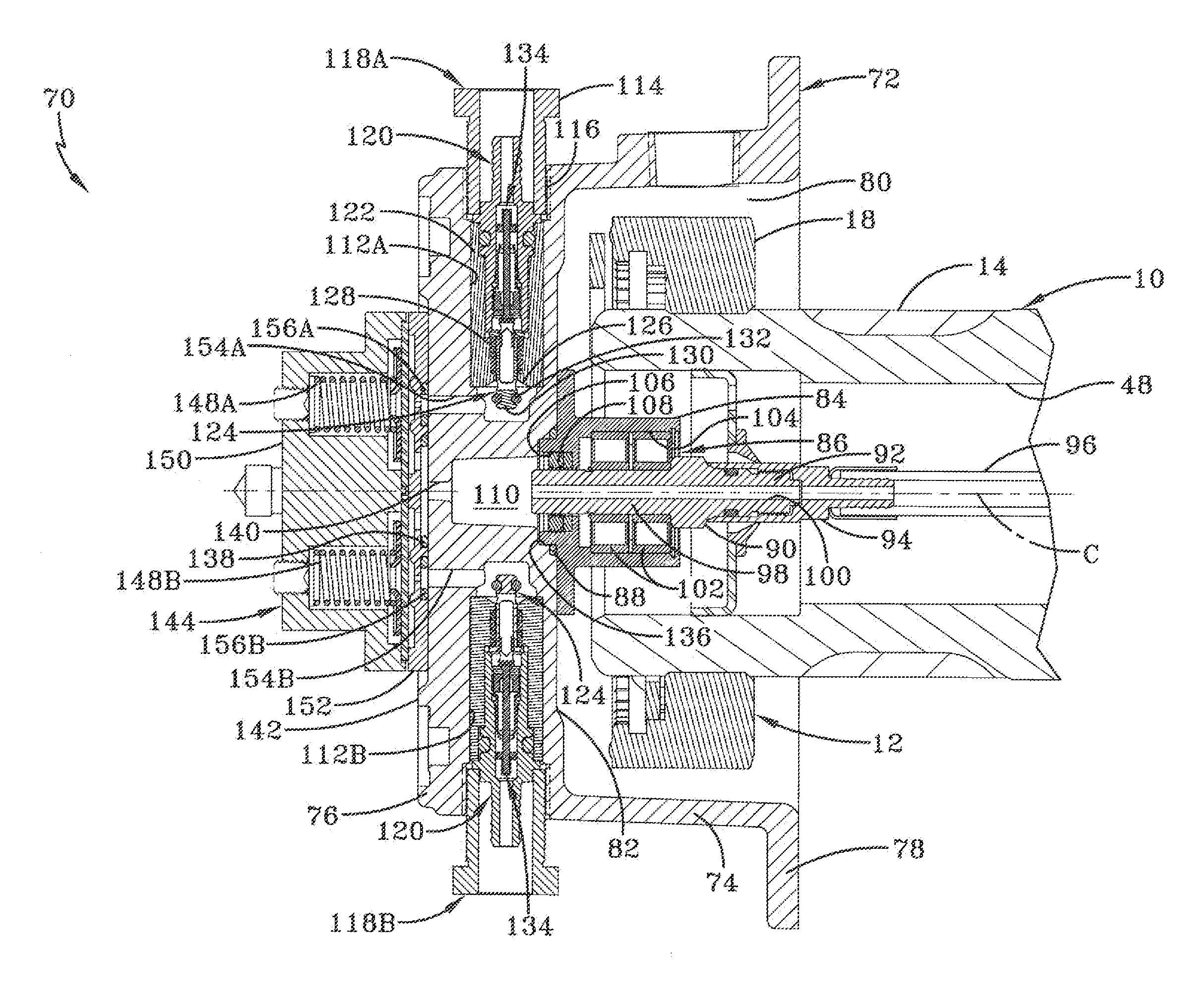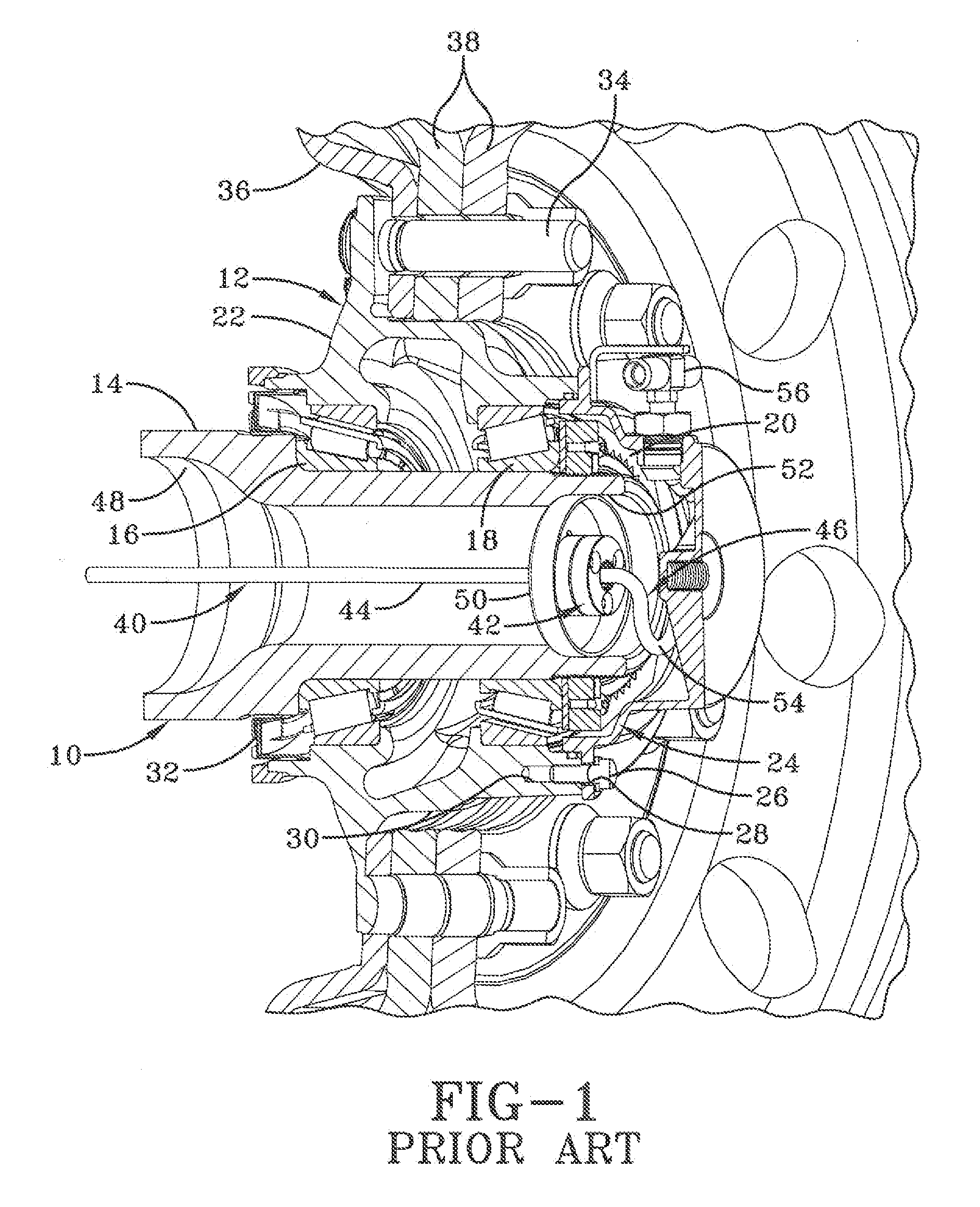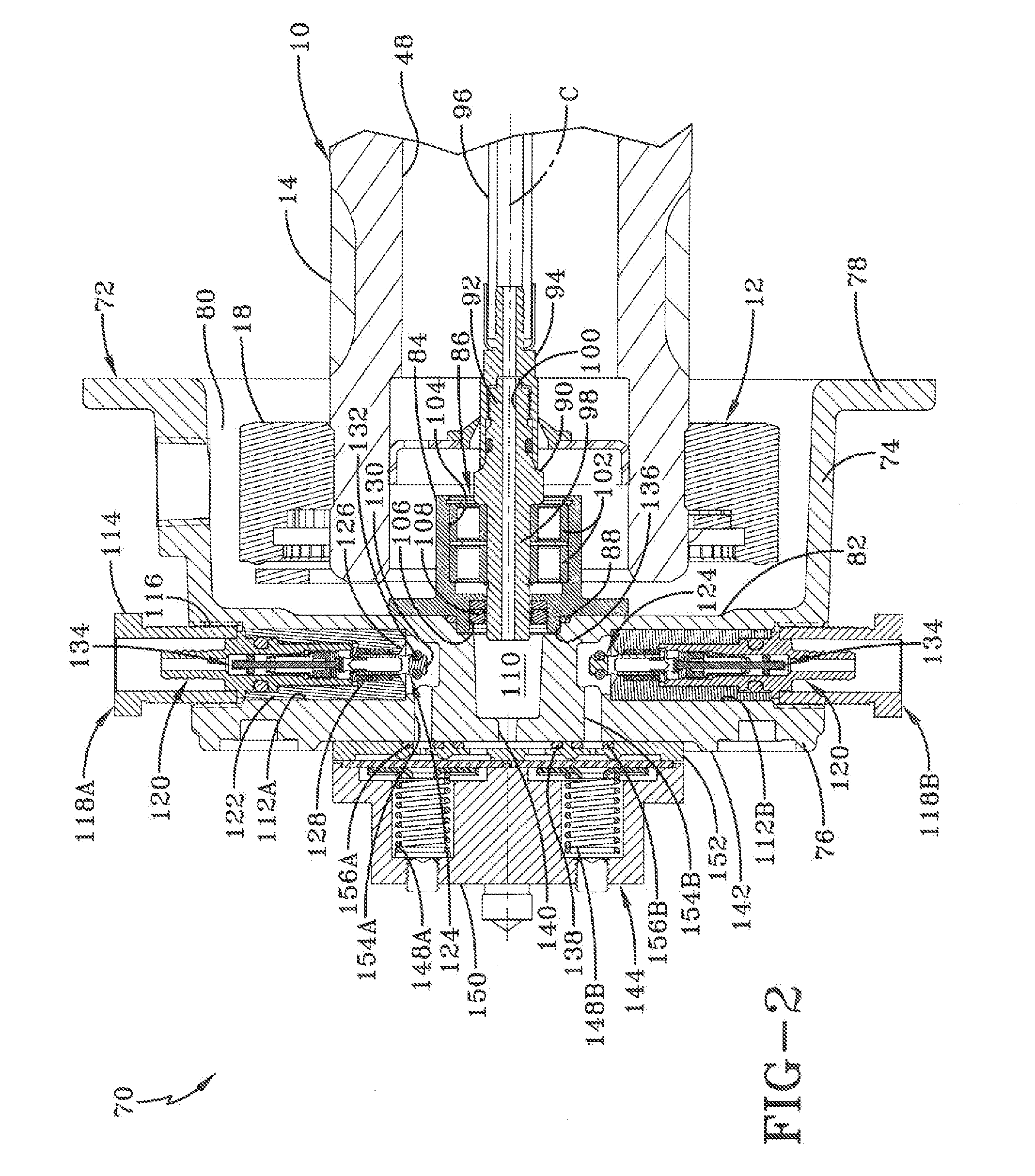Constant pressure pneumatic balancing tire inflation system
a tire inflation system and constant pressure technology, applied in the field of tire inflation systems, can solve the problems of tire pressure not being checked, air leakage from tires, and inability to manually check and maintain the target pressure for each tire,
- Summary
- Abstract
- Description
- Claims
- Application Information
AI Technical Summary
Benefits of technology
Problems solved by technology
Method used
Image
Examples
first embodiment
[0071]The structure of first embodiment tire inflation system 70 provides continuous balancing of pneumatic pressure across all of the tires in the system. More particularly, in a pneumatically balanced system 70, the tires are in fluid communication with one another, and according to the principles of fluid flow, all of the tires have a generally uniform, or balanced, inflation pressure. When this uniform inflation pressure is above the target pressure, the means that are employed to monitor the tire pressure enable tire inflation system 70 to decrease the uniform pressure by venting excess air to atmosphere as described above, which in turn respectively decreases the inflation pressure of all of the tires in the system to the target pressure. When this uniform inflation pressure is below the target pressure, the means that are employed to monitor the tire pressure enable tire inflation system 70 to increase the uniform pressure by supplying air from a vehicle air tank as described...
second exemplary embodiment
[0090]With particular, reference now to FIGS. 7-9 and 12A-12B, hub cap 176 of second exemplary embodiment tire inflation system 170 includes a cylindrical side wall 178. Intermediate wall 174 is integrally formed between an inboard end of hub cap 176 and an outboard end 200 of side wall 178, and preferably nearer to the side wall outboard end, and extends generally perpendicular to the side wall. It is to be understood that other shapes and configurations of hub cap side wall 178 and intermediate wall 174 may be employed without affecting the overall concept or operation of the present invention, such as an integrated dome or cone shape formed as one piece or multiple pieces, and / or adjusting the intermediate wall to be an outboard wall. A radially-extending flange 180 is formed on an inboard end of side wall 178, and is formed with a plurality of bolt openings 182 to enable bolts (not shown) to secure hub cap 176 to the outboard end of wheel hub 22 (FIG. 1). In this manner, hub cap...
second embodiment
[0102]The structure of second embodiment tire inflation system 170 provides continuous balancing of pneumatic pressure across all of the tires in the system. More particularly, in a pneumatically balanced system 170, the tires are in fluid communication with one another, se that and according to the principles of fluid flow, all of the tires have a generally uniform, or balanced, inflation pressure. When this uniform inflation pressure is above the target pressure, the means that are employed to monitor the tire pressure enable tire inflation system 170 to decrease the uniform pressure by venting excess air to atmosphere as described above, which in turn decreases the inflation pressure of all of the tires in the system to the target pressure. When this uniform inflation pressure is below the target pressure, the means that are employed to monitor the tire pressure enable tire inflation system 170 to increase the uniform pressure by supplying air from a vehicle air tank as described...
PUM
 Login to View More
Login to View More Abstract
Description
Claims
Application Information
 Login to View More
Login to View More - R&D
- Intellectual Property
- Life Sciences
- Materials
- Tech Scout
- Unparalleled Data Quality
- Higher Quality Content
- 60% Fewer Hallucinations
Browse by: Latest US Patents, China's latest patents, Technical Efficacy Thesaurus, Application Domain, Technology Topic, Popular Technical Reports.
© 2025 PatSnap. All rights reserved.Legal|Privacy policy|Modern Slavery Act Transparency Statement|Sitemap|About US| Contact US: help@patsnap.com



